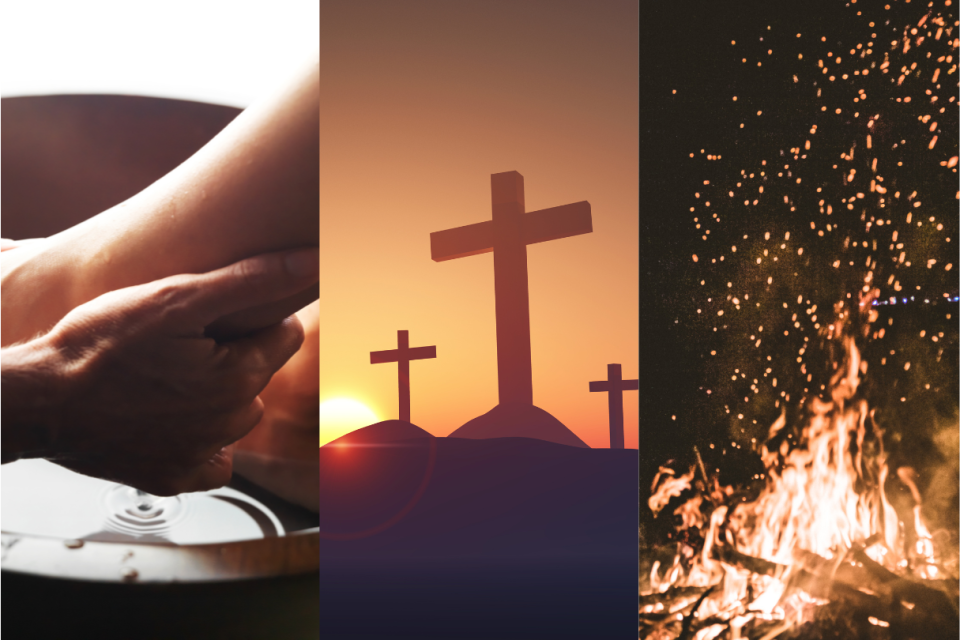The Triduum, or Great Three Days, is the antidote to an overly saccharine Easter.
It is one service held over three days, a continuing narrative that feeds into one another, encompassing not only that fateful moment in history but also speaking to all moments in time and space where God has eked resurrection out of despair and unimaginable heartache.
Maundy Thursday gathers the disciples, including you and me, around a shared table where we all get our feet washed and share in dipping our bread in the same bowl as Jesus. It is a moment of an ordinary meal—and the last meal we’ll ever need, by God.
Then the sanctuary is stripped, like our souls now feel stripped, as we realize what is about to happen. And we must stay to bear witness to it. We must be witnesses to the pain and the hidden promise, as all people of God are called to bear witness in moments of pain while clutching God’s promises.
On Good Friday we come not to the church but, with everything bare and the lights low, to a darkened tomb. There we encounter the story of that fateful night, a story we know well, not only because we’ve heard it every year but because we’ve lived it. It’s familiar.
We’ve all been betrayed by our friends and have all betrayed a friend. We’ve all been falsely accused and have accused others without evidence, let alone our unspoken shame of knowing our justice system does this and profits from it all the time.
We’ve all seen power prey on the powerless. It happens literally every day, despite what we tell our children and hope about our world.
Easter is not a day—it’s a journey. The Triduum gives voice to this.
This is that story, but instead of the local courtroom, it’s the courtroom of the cosmos.
The reproaches are sung where we’re challenged to answer unanswerable questions of eternal proportions, and the service ends with the cross alone left in the room. And we are asked, “Oh, my people, why do you wage war? Oh, my people, why do you turn your back on one another, on creation, on your God? Answer me!”
And our only answer is in standing vigil and bearing witness as the firstborn of creation, the Christ, is hung on the judgments of a world that would rather try to save itself than be saved.
We are, in the end, left only with the cross: this twisted tool of torture to which we now cling, hoping that something good can yet come from it.
Sound familiar?
Then we spend the whole next day in the quiet of nonanswers. At dusk, we stream back to that tomb, create a new fire to keep our souls warm, and tell campfire stories of salvation to console ourselves.
“Remember that time when God created the world?” we ask around the fire. “And remember when God saved those folks from the fiery furnace?” We retell these stories to spark hope that, as in those impossible moments, God might be able to do something new with this impossible moment. We teach these stories to our babies, even as we reteach them to ourselves.
And before we know it, the tomb has turned into a lush garden, and the tomb that was full of death is suddenly full of life: flowers, water and, yes, living bodies.
Our bodies.
Our bodies who now gather around the body of the risen Christ, and as the risen Christ, now seen in bread, wine, water and the faces around us. And we baptize people who have newly heard all of this. And we sing and dance and party because, yup, resurrection has happened again, by God!
The whole arc has import. Every scene plays a part.
Easter is not a day—it’s a journey. The Triduum gives voice to this.
And every year we remember it and re-member ourselves to that story of life coming out of death.
And once on the far side of that journey, we laugh and dance with memory in one hand and the future in the other.
Happy Easter!






